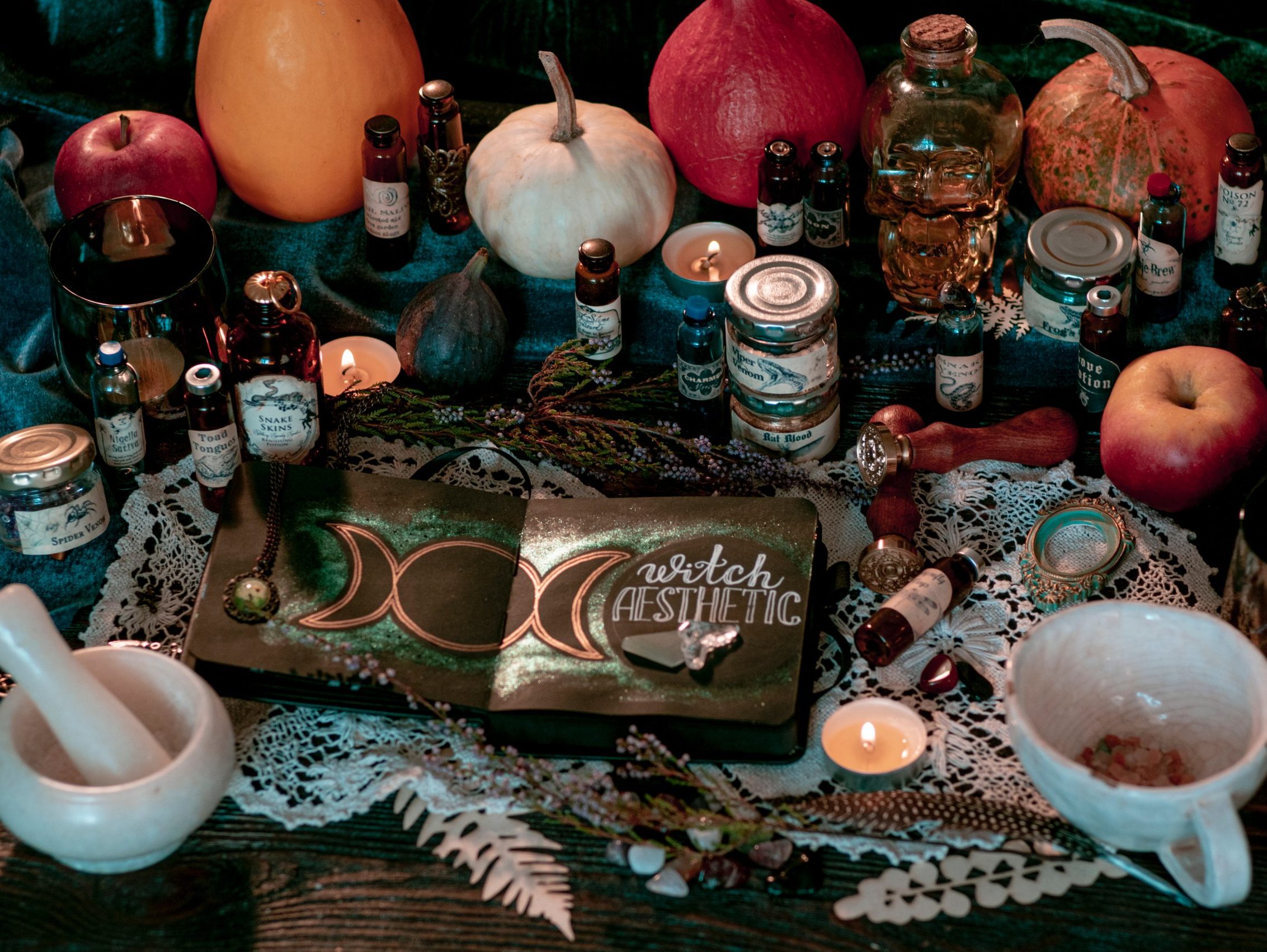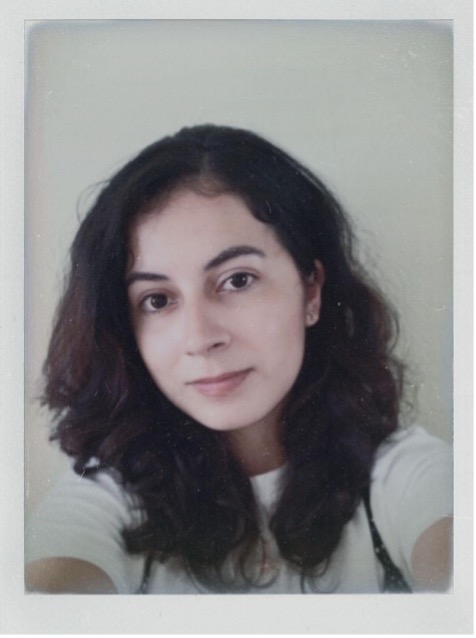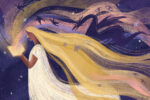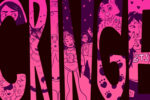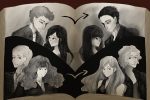Witches have been around for as long as living memory. They exist within many cultures around the world, and stories of them are passed on throughout generations, especially through legends and folklore. In Western media, they were often caricatured as haggardly, usually older women with malevolent intentions toward the innocent. They are able to manipulate supernatural forces to see into the future or cast curses on others.
Witches are compelling figures, and the concept of what it means to be a witch has undergone changes in the past few years, especially in the United States. A social and cultural movement has formed around it, determined to push back against the oppressive pressure to conform within a patriarchal society.
To understand the current intrigue, it might help to know a little bit about witches’ history. The earliest reference made to witches probably comes from the Christian Bible, where followers are warned not to dabble in witchcraft or consult with known witches. One story tells of how King Saul secretly went to consult the Witch of Endor to conjure up the spirit of a dead prophet, even after banishing all of the mediums from his land.
Facing a battle with the mighty army of the Philistines filled Saul with dread, and he decided he needed the guidance of the now-deceased prophet to tell him what to do. Instead of guidance, however, the spirit of the prophet predicted the deaths of King Saul and all of his sons. The prophecy ends up coming true, with all of his sons dying in battle the next day and King Saul taking his own life. Interpretations concluded the story implied sorcery was indeed possible but forbidden.
Because of the Bible’s multiple warnings not to dabble in witchcraft, mass hysteria eventually began to take hold of believers of Christian teachings, especially in Europe and eventually in early America. During the late 1400s, a woman named Helena Scheuberin was accused of doing witchcraft by a clergyman named Heinrich Kramer. She was married to a wealthy man and was described as independent and unafraid to speak her mind. These qualities got her in trouble and she was put on trial for practicing sorcery.
Kramer, though, failed to convince the judge to give her a harsher punishment for what was seen at the time as a minor offense. Salty, Kramer kept up his investigations and formed an unhealthy obsession with Scheuberin. He got kicked out of the city by the local bishop because of his preoccupation with her, but unfortunately, Kramer ended up writing a whole book on how to identify witches as well as horrible tactics to get the accused to “admit” their crimes.
He would write that women with “strong personalities” were more likely to be witches but also that women were the “weaker” sex and more likely to be susceptible to temptations made by the devil himself. The book also promoted punishments to deal with the accused, such as burnings at the stake.
With this book, Kramer would finally get what he wanted. His book would become instrumental in getting women accused of witchcraft to receive extremely cruel and unusual punishments during a period lasting more than 200 years in Europe. The witch hunts would disproportionately target women over the age of 40 living on the fringes of society. Their status as unmarried and childless made them even bigger targets as they were perceived as difficult and unwilling to conform to norms.
The witch hysteria would eventually make its way to the New World in the late 1600s with the infamous Salem Witch Trials. Salem Village would end up being the perfect breeding ground for what would ensue; the early Massachusetts colony already existed in an atmosphere of fear because of things like warring factions and families, fear of the devil, fear of attack from Native American tribes and even the recent smallpox epidemic.
The mass witch hunt would start when a group of young girls got sick, and the town doctor couldn’t figure out what was wrong with them — so he decided the girls were probably “bewitched.” Naturally, they needed to find a scapegoat for their own problems, so they began to blame three specific women for bewitching them. The accused women were already social outcasts and made easy targets for their accusations. One of the accused women then pleaded guilty and threw the other two women under the bus in an effort to save herself.
Her action caused the villagers to believe they were right all along, and the event set off a chain reaction, leading to 200 women and men being accused of witchcraft and 20 people being put to death. Even critics who opposed the witch hunts were accused of practicing witchcraft themselves. The entire event showed how mass hysteria will ruin innocent people’s lives and how marginalized groups suffer the most.
Hundreds of years have gone by since the Salem Witch Trials, and for a long time, witches seemed to be a thing of the past, mostly inspiring movie and TV show characters and Halloween caricatures. Witches have indeed inspired some of the most iconic characters in pop culture. Their depictions vary greatly from each other, especially compared to portrayals from the past.
The Wicked Witch of the West from “The Wizard of Oz” for example, inspired a lot of modern-day portrayals of witches with the pointed hat and black garments. Her whole attitude and demeanor embody wickedness. She becomes vengeful after Dorothy accidentally kills her sister but not out of sorrow as much as spite. She is also depicted as selfish when the good witch points out the sister’s ruby slippers on Dorothy, and the Wicked Witch becomes more concerned about obtaining the slippers rather than mourning the loss of a family member.
The witch stereotype started to change shape with Hermione Granger’s character in the “Harry Potter” films. Hermione is a young witch who is accepted to Hogwarts soon after discovering her magical abilities. Despite her lowly status as a “muggle,” she is motivated to be better and pushes herself to learn and memorize all the spells by heart. In the beginning, she is shown as very unfriendly as well as bossy. Her strong personality and ambition made it difficult for her to make friends with some of the other students. Despite all this, her drive to succeed enabled her to accomplish pretty amazing things, and her character is an inspiration to young girls everywhere.
“Sabrina the Teenage Witch” features probably one of the most memorable witches in recent memory. The 1996 show presented a wholly different take of what a witch could look like. The title character isn’t old and haggardly but a young and attractive girl who would be completely normal if not for her magical abilities. She is fun and outgoing and cares deeply for those around her. The show painted witches in a new light as more wholesome and not overly threatening compared to previous portrayals.
Along a similar vein, Sabrina’s character in “Chilling Adventures of Sabrina” represented a different side to her personality. She is also well-adjusted and fun to be around, but her principles cause her to go against the Church of Night. The other church members consider her to be problematic because of her willingness to go against the grain. Sabrina’s strong personality is shown positively in the show.
The media is definitely showing a shift in how witches are portrayed in modern-day entertainment, and over the past few years, women and men have been actively redefining what it means to be a witch. Being a witch in modern times embodies many of the qualities of feminism.
It takes away the focus of the self based on a patriarchal way of thinking and refocuses it to embrace their own inward qualities and strengths. It’s supporting others through congregations and sisterhoods. It’s going against society’s status quo and being able to live in peace while doing so. It’s being able to be different without being persecuted for it.
Millennials have been turning away from traditionally historic religions and taking up interests such as tarot cards, astrology and spell-casting, among other Wiccan practices. According to a Newsweek article, recent studies have shown that 1.5 million Americans are actively practicing Wicca, a huge increase from the less than 10,000 practitioners from 30 years ago. They actively participate in the political sphere to fight for women’s issues like reproductive rights. Online forums like the subreddit r/WitchesVsPatriarchy as well as social media outlets like TikTok provide spaces for witches to share ideas and to support each other.
Modern-day witches claim to be spiritual and more in tune with the Earth as opposed to devil-worshippers like society previously believed. They strive to embrace their innate qualities, which for a long time were considered “difficult,” and other negative connotations assigned to socially outcasted women. Witches have had a long and dark history but are now coming out the other end in an impactful and positive way.


